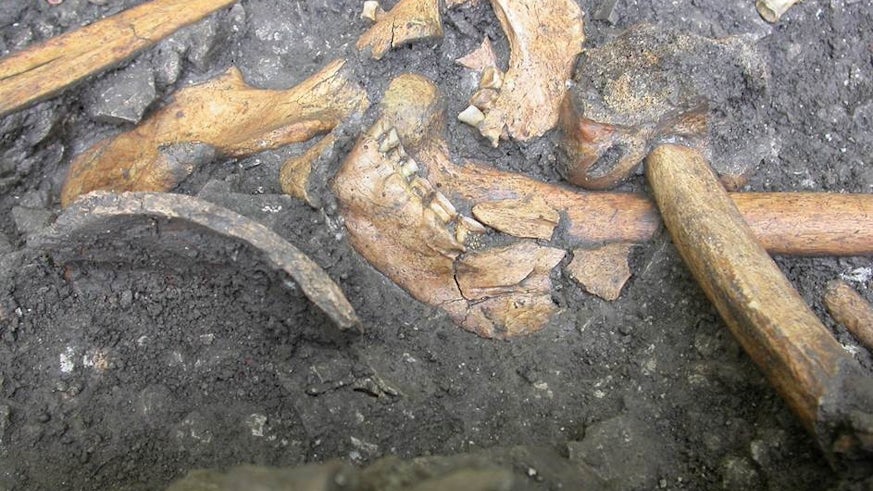Teeth tell a tale
8 September 2016

Research involving the University is changing our understanding about when Mesolithic people began to consume cultivated plants, the precursor to our modern-day cereals.
In a new joint study conducted by researchers at Cambridge, Cardiff, UCL and York universities, direct evidence that Mesolithic foragers of this region were consuming domestic cereals by 6600 BC has been found through the study of dental calculus from prehistoric remains.
Using remains discovered during an excavation in Vlasac in the Balkans between 2006-2009, the team used polarised microscopy to study micro-fossils trapped in the ancient calcified dental plaque of nine individuals dated to the Late Mesolithic (6600–6450 BC) and the Mesolithic–Neolithic transition phase (6200–5900 BC).
“What we happened to discover has a tremendous significance as it challenges the established view of the Neolithization in Europe”
“Microfossils trapped in dental calculus are a direct evidence that plant foods were an important source of energy within Mesolithic forager diet. But more significantly, they reveal that domesticated plants were introduced to the Balkans independently from the rest of Neolithic domesticated animals and artefacts, which accompanied the arrival of farming communities in the region,” he added.
These results suggest that the common notion of what constituted the typical elements of Early Neolithic ‘package’ – pottery, ground stones, timber houses, polished axes, domesticated animals and plant species known only in cultivation – may need to be reconsidered.
Working at Cambridge University during the excavation, Dr Borić said: “At the time of the discovery we had the sense that these groups of complex hunter-gatherers were in contact with other more distant locations. We found beads made of marine gastropods that come from coastal areas in Greece and the Adriatic, hundreds of kilometres away from the region for instance.
“It’s intriguing to understand that our excavations show that forager Mesolithic people at this location consumed domesticated species of crops pre-dating the received wisdom on when domesticates spread across Europe. The evidence changes our view on the Neolithization of the whole continent and may be similar to current models for the spread of domesticated plants among foragers in the Americas.”
Starch granules preserved in Mesolithic dental calculus from Vlasac provide the first direct evidence that Neolithic domestic cereals such as wheat and barley had reached inland foragers deep into the Balkan hinterland by 6600 BC. Social networks between local foragers and the first Neolithic communities are assumed to be the major factor in this introduction.
Dental calculus reveals Mesolithic foragers in the Balkans consumed domesticated plant foods byEmanuela Cristiani [McDonald Institute for Archaeological Research, Cambridge] Anita Radini [York], Marija Edinbourogh [UCL] and Dušan Borić [Cardiff] is published in Proceedings of the National Academy of Sciences.
Dr Boric’s latest book Deathways at Lepenski Vir: Patterns in Mortuary Practice is the first volume of a comprehensive archaeological and anthropological study of the human skeletal remains from this site, published by the Serbian Archaeological Society.